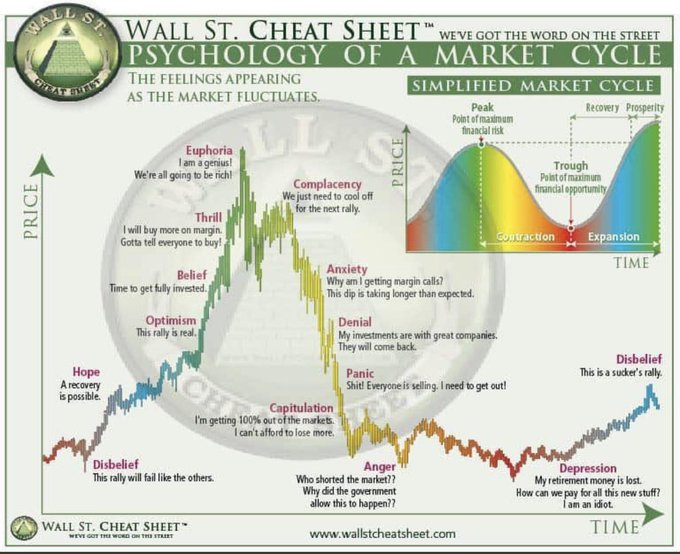I would like to directly draw the final conclusion at the beginning of whole series: the purpose of this series is to popularize the concept of Elastic Finance, because I believe this is definitely the greatest Blockchain technology innovation after Bitcoin payment and Ethereum smart contract. The reasons will be explained in the series. Now let's start from scratch.

In Economics, the term “elasticity” was put forward by Alfred Marshall, the modern British economist. It refers to the change of a certain proportion in one variable relative to another. The concept of elasticity can be applied to all variables with causality.
Extended to Elastic Finance, it, in essence, is to stabilize one financial variable through the adjustment of another financial variable in order to achieve the purpose of risk control or capital efficiency improvement. Since the concept is a little abstract, we can move on directly to the practice part.
The practice of Elastic Finance has benefited from the development of Blockchain technology. Why? Because of the emergence of Bitcoin and Ethereum. As a great peer-to-peer decentralized payment network, Bitcoin serves as a perfect solution to the consensus and trust problems. Up to now, many people know that digital currency is a trustworthy and valuable medium. And, the emergence of Ethereum provides a toolkit for the development of Blockchain technology. Various functional Blockchain applications can be developed through smart contracts. Thanks to Satoshi Nakamoto and Vitalik Buterin, human beings can always see further by standing on the shoulders of giants.
The nature of finance is value circulation. Bitcoin is a revolutionary innovation of value flow, but as a form of value storage, it is not perfect: the total amount of Bitcoin is fixed at 21 million, which can eliminate inflation and improve consensus, but the value is floating, even sovereign currencies (like USD, Euros, etc.) cannot guarantee that it will remain unchanged. Then under the condition of constant supply, the price of Bitcoin will fluctuate sharply with the rise and fall of the value. Now, here comes the problem. If Bitcoin is used as a form of value storage, the asset value will inevitably fluctuate back and forth, and the purpose of value storage cannot be achieved.

Taking a step back, can sovereign currencies meet the needs of value storage? The answer is negative. We all know that deflation and inflation do exist, and that sovereign currencies are deeply bound to sovereign credit. The credit bankruptcy or economic downturn of sovereign countries will exert a huge impact on sovereign currencies. Deposits and cash will face the risk of depreciation, resulting in a decline in value. Obviously, this is not an excellent form of value storage. In order to solve the core problem of value storage, Elastic Finance comes into being.
Elastic Currency
The application of Elastic Finance in the field of value storage, or currency experiment more precisely, produces the so-called elastic currency. What is elastic currency? Simply put, it is a value medium that anchors a target price (value) to determine a price range, issues more money when the price is higher than the price range, reduces the amount of money when the price is lower than the price range, and allows the elastic money price to fluctuate up and down around the anchored price with the mechanism of market self-regulation. Specifically, let's say we anchor the target price at $1, and the price range is between $0.95 and $1.05. Today's price is $0.8, which means that today's amount of money will be reduced by 2%. Assuming that your account has 100 units of elastic currency, the amount of elastic currency in your account today will be 98 units. This is called "rebase", which is reflected in the price bouncing up and down around the target price.
Elasticity coefficient 2% comes from: ((price 0.8 - target price 1) / target price 1) * 100) / 10 = 2%. In practice, this price of 0.8 generally refers to the Oracle Rate of the day. Of course, this is a specific technical term, which does not affect the interpretation of the concept of Elastic Finance. We will talk about it in the future.
Then another problem arises: the price of elastic currency jumps up and down, which is not as good as Bitcoin or fiat, is it? And assuming that the price has always been below the price range, the amount of money is reduced every day, so that assets shrink faster and there is no way to preserve their value. So, what is the point of Elastic Finance?
Graded Bonds
The answer is very simple. Elastic currency is not an ultimate solution, but the infrastructure of the solution, which needs to be realized through a two-tier hybrid approach of elastic currency + graded bonds. Specifically, assuming that the effect of one elastic currency is as designed, the price fluctuates back and forth between $0.5 and $1.50, the volatility seems to be very large, but in fact, in various extreme market environments, the price has never fallen below $0.5. So, let’s borrow the logic of graded bonds, convert the part of $0 to $0.2 to A-rated bonds (then value of one unit of A-rated bond is $0.2), which enjoy the highest credit, can best preserve value, yet is rebase-free; convert the part of 0.2 to $0.5 to B-rated bonds (then value of one unit of B-rated bond is $0.3), which enjoy the second highest credit, can generally preserve value, yet have some portion of rebase; convert the part of $0.5 to $1 part to Z-rated bonds (then value of one unit of Z-rated bond is $0.5), which have the worst credit, yet enjoy the largest portion of rebase.
Then put the 5 units of A-rated bonds together, which equals the value of 1 Dollar (5 * 0.2), and a stable medium that anchors the US dollar is produced. It will not deflate or inflate. As long as the underlying elastic currency does not fall below $0.2, the price will remain stable. There is no need for sovereign or organizational credit endorsement, Fiat or Stablecoin collateral. With the help of Blockchain technology, it will circulate normally in a decentralized world.
Elastic currency + graded bonds. That’s it! I just want to say: "This is the Midas touch." The first perfect stable equivalent in human history. Elastic Finance: the greatest Blockchain technology innovation after Bitcoin payment and Ethereum smart contract.